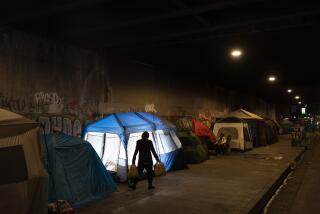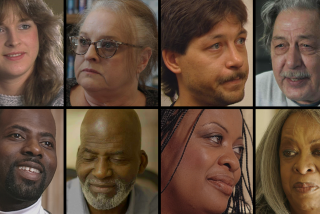Black Americans’ Problems Are the Orphan of History
- Share via
The problem of black teen-agers having children out of wedlock has been the focus recently of several news stories and a well-publicized CBS documentary. The Moynihan Report on the black family initiated this focus more than 20 years ago. These reports, no matter how well intended, do no more than reinforce racist stereotypes. Enough already!
The problem is that none of these accounts adequately present the American system’s role in creating the crisis, or its role in addressing the problem. The media leaves the public with an inaccurate image of the black community as primarily dependent and irresponsible, and the problem as being mainly the result of public welfare and a lack of self-discipline.
Government-sanctioned racism denied blacks the vote after slavery and until the 1960s in the South--where most of the black population was located. Without political power, blacks could not develop economic power. Without political and economic power, they could not obtain adequate educational and social opportunities.
In the eight states that held more than 80% of the nation’s black population, four to eight times as much money was spent on the education of white children well into the 1940s, and as much as 25 times more was spent on whites in states where there was a large black majority. The same disparity existed at the postsecondary level. As late as the mid-1960s two prestigious women’s colleges had an endowment more than that of all the 100-plus black colleges combined. In addition, blacks were excluded from labor unions until the 1950s and ‘60s.
As a result, 90% of the black population was forced to the bottom of the job market as laborers and domestics. Until after World War II, with the organization provided by the black church and related institutions, black families were able to function reasonably well, even with only marginal income. As late as 1965, 79% of them were still two-parent families. Parents were able to serve as role models for their children. And because we were a nation of small towns, rural areas and close-knit urban communities, heads of households could interact with like-minded parents, teachers, religious leaders and others, to transmit desirable values to the children.
After World War II education became the ticket to jobs paying a living wage. Successful blacks began moving out of the inner-city, taking their money, leadership and role models, leaving the poor isolated and alienated. Whites began to move to the suburbs, taking quality education and jobs with them. Those trends left certain parents--black and white--less able to transmit desirable values to their children.
Blacks, as a consequence of their history of exclusion, were most vulnerable. Some once black families began to experience a downward spiral. More white families are beginning to do the same. Indeed, a recent newspaper story noted the rise of white middle-class youth gangs in Los Angeles; and the rate of increase of teen-age pregnancies among whites is higher than the rate among blacks.
Public policies could have been developed to counter the effects of slavery and to bring black families into the societal mainstream. We developed policies to help Europe overcome the effects of a war we did not start. We spent billions rescuing millions from communism. We assist victims of every natural disaster. But we have not spent much to enable blacks to overcome the adverse effects of slavery and the illegal denial of opportunity that followed.
Without a historical perspective and an understanding of how events shape behavior, there is no way to grasp the current blitz of information on the plight of poor urban blacks. The facts: A report by Black Enterprise magazine, based on 1983 census data, shows that 81% of black households pay at least one to all six types of taxes, or about $37 billion, and that blacks earn more than $152 billion annually. More than 1 million black households earn more than $20,000 per year. The rate of out-of-wedlock pregnancy among better-educated black women is no higher than their white counterparts.
The focus on blacks under stress would not be a problem if most Americans received a true picture of the full spectrum of the black experience. But the media constantly skew the picture: Black criminals are almost routinely identified by race--photos of black gang members and other blacks accused of crimes are ubiquitous, while many achievers mentioned in the news are never identified as black, and it does not seem to be nearly as necessary to use their photographs. It’s as if when blacks achieve, they stop being black, or they become invisible. Yet when they are victims of social problems, then they are black--and highly visible.
Because we tend to see problems among blacks solely as “black” problems, we don’t face up to serious social issues until they have spread to the larger community and are out of hand--drugs and violent crime, for example.
When we stop viewing societal problems largely in racial terms, we will be able to devise policies to effectively combat them. But please, no more analyses of the problem of “those poor blacks” until we are mature enough to examine the whole story. And if we don’t do it soon, because of the generation-to-generation transmission of behavior patterns, the quality of life for all of us will deteriorate sharply.
More to Read
Sign up for Essential California
The most important California stories and recommendations in your inbox every morning.
You may occasionally receive promotional content from the Los Angeles Times.













